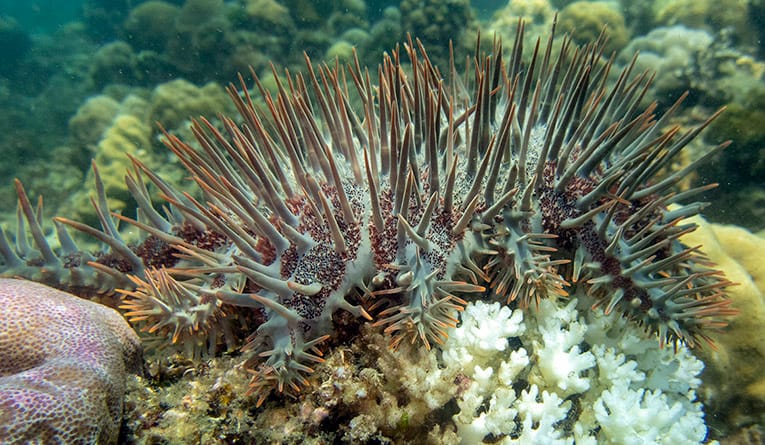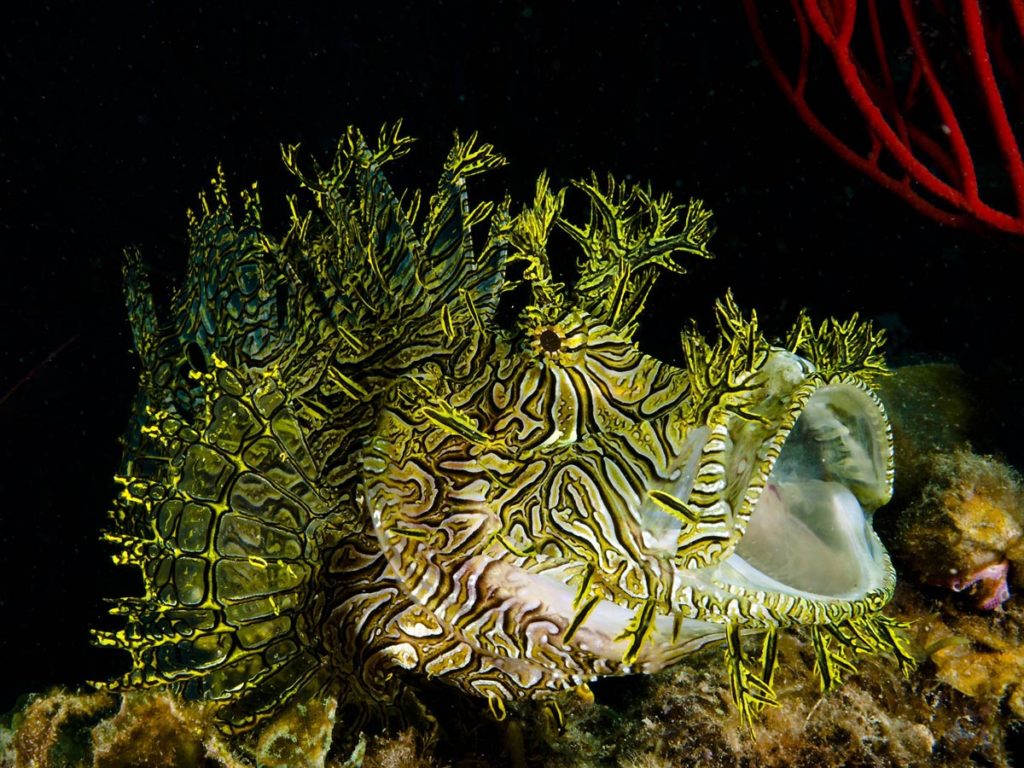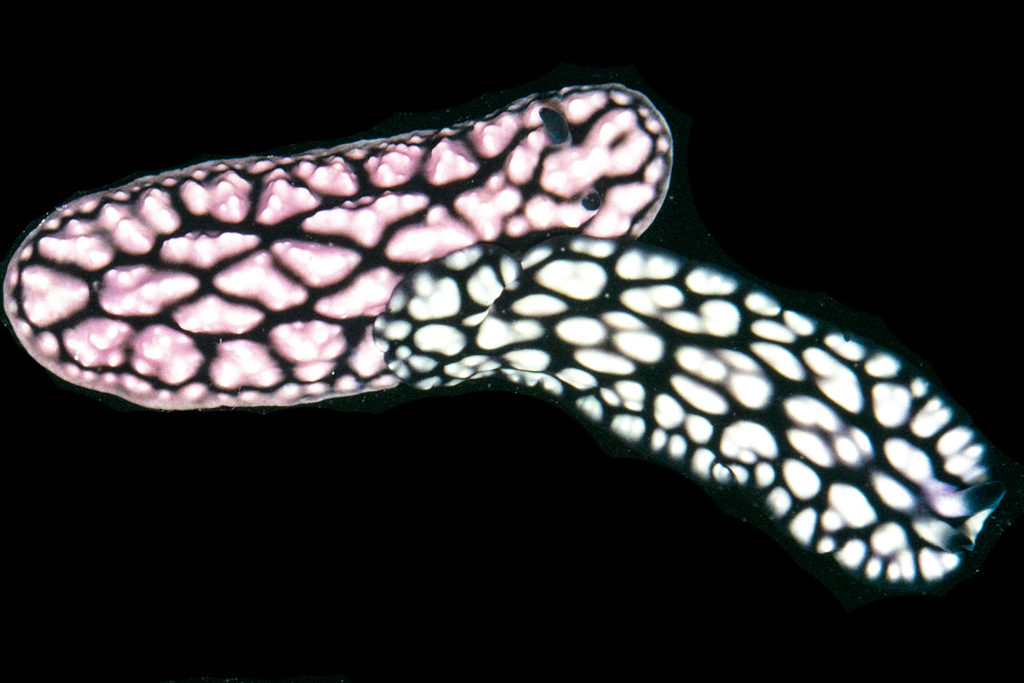
First of all about the beauty: Crown of Thorns juveniles are really handsome in their own spiky-snowflake way. They develop spines and begin to feed on coral only about one year of age, drifting as planktonic larval before that age. Getting bigger and bigger they are gaining more and more brutality and spike length.

Adult Crown of Thorns can grow up to a huge size – more than metre in diameter! A few interesting facts:
– Crown of Thorns are a natural part of the coral reef ecosystem. An increase in their numbers only occurs when the reef is unhealthy.
– In healthy reefs Crown of Thorns are playing a positive role by eating some of the faster-growing corals and giving the slower-growing corals a chance.

– Adult Crown of Thorns can survive without feeding for up to nine months. The normal lifespan of a Crown of Thorns is about four or so years.















